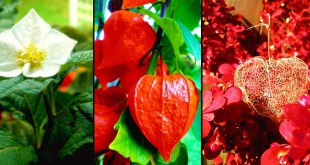 Geranium — The cranesbills make up the genus Geranium of 422 species of annual, biennial, and perennial plants found throughout the temperate regions of the world and the mountains of the tropics, but mostly in the eastern part of the Mediterranean. These attractive flowers will grow in any soil as long as it is not waterlogged. Propagation is by semi-ripe cuttings in summer, by seed or by division in autumn or spring.
Geranium — The cranesbills make up the genus Geranium of 422 species of annual, biennial, and perennial plants found throughout the temperate regions of the world and the mountains of the tropics, but mostly in the eastern part of the Mediterranean. These attractive flowers will grow in any soil as long as it is not waterlogged. Propagation is by semi-ripe cuttings in summer, by seed or by division in autumn or spring.
The species Geranium viscosissimum is considered to be protocarnivorous.
The name “cranesbill” derives from the appearance of the seed-heads, which have the same shape as the bill of a crane. The genus name is derived from the Greek word geranos, meaning “crane”. The long, palmately cleft leaves are broadly circular in form. Their rose, pink to blue or white flowers have 5 petals.
Some cranesbills are commonly cultivated. Among the best known are the blood-red geranium, Geranium sanguineum, and the meadow geranium, Geranium pratense, both natives of Europe and Asia with large, purple flowers, and the wild cranesbill, Geranium maculatum, a common woodland species of eastern North America with large, rose purple flowers. The storksbills, or florists’ geranium, genus Pelargonium, include about 280 species of mostly succulent perennial herbs, subshrubs, and vines native to southern Africa. Although similar to Geranium, the flowers of Pelargonium are irregular, with two of the petals differing from the others in size, structure, or markings and lacking glands between them.
Cranesbills are eaten by the larvae of some Lepidoptera species including Brown-tail and Mouse Moth.
 Kids Portal For Parents India Kids Network
Kids Portal For Parents India Kids Network




